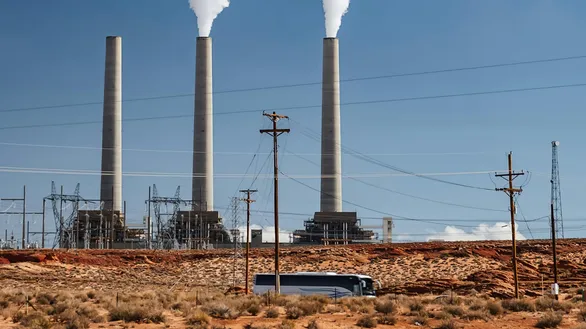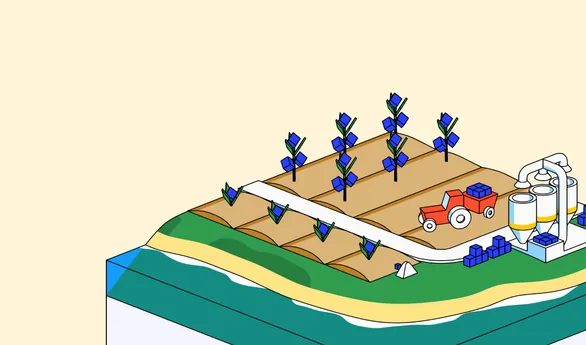Fugitive emissions are an often-overlooked yet significant contributor to greenhouse gas emissions. These emissions, which escape unintentionally from various industrial processes and infrastructure, can have a substantial impact on the environment and human health. Understanding fugitive emissions is essential for mitigating their effects and addressing climate change.
Full definition
Fugitive emissions refer to the unintended release of gases or vapors from equipment, industrial activities, or infrastructure. Unlike emissions from controlled processes such as combustion, these emissions often occur due to leaks, equipment malfunctions, or operational inefficiencies.
These emissions can consist of various greenhouse gases, including carbon dioxide (CO2), methane (CH4), and volatile organic compounds (VOCs). Because fugitive emissions are typically unregulated and dispersed, they are challenging to measure, monitor, and control effectively.
Types of fugitive emissions
Fugitive emissions can originate from several industries and processes. Understanding the types of fugitive emissions is crucial for identifying their sources and potential mitigation strategies.
1. Industrial and manufacturing processes
Factories and production facilities are common sources of fugitive emissions, often originating from process equipment such as valves, flanges, seals, and other components. Industries such as chemical manufacturing and refining, leading producers of certain emissions, are particularly prone to these types of leaks. Fugitive emissions can also include gases like sulfur hexafluoride (SF6), widely used in electrical devices for insulation.
2. Natural gas systems
The production, storage, and transportation of natural gas is a significant source of fugitive methane emissions. Methane is a potent greenhouse gas, with a global warming potential many times greater than that of carbon dioxide. Common sources include leaks in pipelines, compressors, and storage tanks. Effective leak detection methods are crucial for identifying and mitigating these emissions.
3. Mining activities
Mining, particularly coal mining, is a major contributor to fugitive methane emissions. Methane trapped in coal seams is released during extraction and can escape into the atmosphere through ventilation systems or improperly sealed mines.
Similar to coal mining, oil extraction activities also contribute to fugitive emissions, particularly methane.
4. Waste management systems
Landfills and wastewater treatment plants can produce fugitive emissions, primarily methane, from the decomposition of organic matter. These emissions often go unnoticed and unaddressed.
5. Agricultural activities
Agriculture contributes to fugitive emissions through livestock manure and soil management practices. Methane and nitrous oxide are the primary gases released in this sector.
Methods of measuring fugitive emissions
Because fugitive emissions are dispersed and often invisible, they are challenging to quantify. However, accurate measurement is vital for understanding their impact and creating effective mitigation strategies.
Fugitive emissions are measured on a case-by-case basis, depending on factors such as the number of emissions a source is estimated to produce, the difficulty of collecting data, and local regulations surrounding scope 1 facility emissions. The Intergovernmental Panel on Climate Change (IPCC) outlines a three-tier approach for measurement:
Tier 1: Top-down Average Emission Factor Approach
This method applies average production-based emission factors to the reported volume of production. It is a simplified approach ideal for regions with small-scale production or limited data availability.
Tier 2: Mass Balance Approach
Although more commonly associated with flared gas emissions, this method balances the number of associated emissions against the amount re-injected or reused to estimate flared volumes.
Tier 3: Rigorous Bottom-up Approach
A more detailed method, this approach relies on infrastructure data and direct measurement of emissions at the facility level. It provides precise results by aggregating data from extensive monitoring efforts.
Fugitive emissions should be accounted for at both the facility and supply chain levels. For sources with low emissions, Tier 1 is typically sufficient, whereas high-emission sources often require the more detailed Tier 3 approach.
The Environmental Protection Agency GHG Reporting Program
The U.S. Environmental Protection Agency (EPA) established the Greenhouse Gas Reporting Program (GHGRP) to track and monitor GHG emissions, including fugitive emissions, across various sectors.
Objectives of the GHGRP
- Transparency: Provide comprehensive data on GHG emissions to inform policy and regulatory decisions.
- Accountability: Require companies to report their emissions data, ensuring adherence to environmental standards.
- Reduction incentives: Identify significant sources of emissions and encourage mitigation strategies.
The GHGRP mandates that industries such as natural gas production, chemical manufacturing, and mining report their emissions annually. By focusing on high-emission industries, the program aims to reduce the environmental impact of fugitive emissions and contribute to global climate goals.
Methods of reducing fugitive emissions
Reducing fugitive emissions is a critical component of efforts to reduce emissions, mitigate climate change, and improve air quality. Companies can implement various strategies to minimize these emissions effectively.
1. Regular maintenance and inspections
Routine checks of equipment and infrastructure can help detect leaks and prevent emissions. Using advanced tools, such as infrared cameras, enhances the ability to locate and address issues promptly.
2. Improved technology and equipment upgrades
Investing in modern, leak-resistant technology reduces the likelihood of fugitive emissions. For example, upgrading seals and valves in industrial processes can significantly minimize emissions.
3. Enhanced monitoring systems
Adopting continuous monitoring systems allows companies to track and manage emissions in real time. These systems can detect leaks immediately, enabling swift corrective action.
4. Capture and utilization technologies
Fugitive emissions, particularly methane, can be captured and repurposed. For instance, capturing methane from landfills or natural gas systems and converting it into energy reduces emissions while providing a renewable resource.
5. Policy and regulatory compliance
Complying with state and federal regulations, such as those set by the EPA, ensures that companies meet emission reduction targets. Incentive programs, such as tax breaks for adopting low-emission technologies, further encourage compliance.
6. Employee training and awareness
Training personnel to recognize and address sources of fugitive emissions fosters a culture of accountability and proactive management.
The health and environmental impact of fugitive emissions
Fugitive emissions pose significant risks to both human health and the environment. Methane and VOCs, for example, contribute to poor air quality and exacerbate respiratory conditions. Additionally, these emissions amplify the greenhouse effect, accelerating climate change and endangering ecosystems.
By addressing fugitive emissions, industries can improve public health outcomes, protect the environment, and enhance their sustainability profiles.




